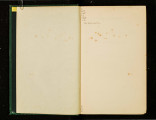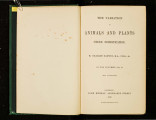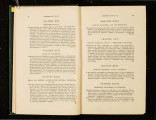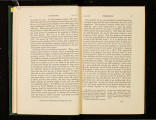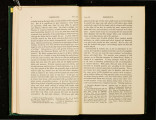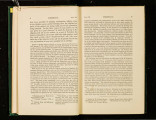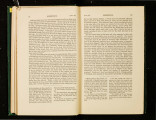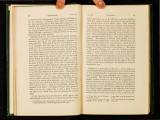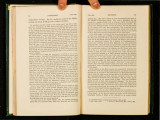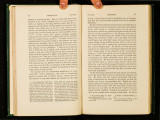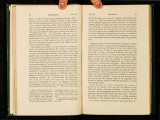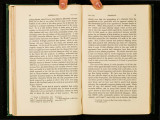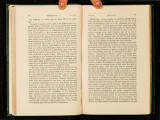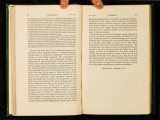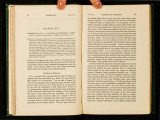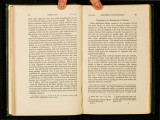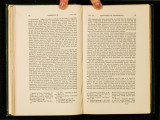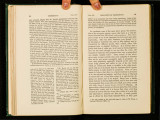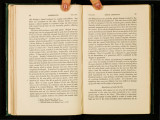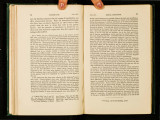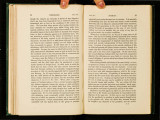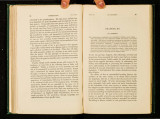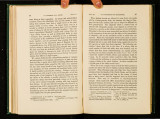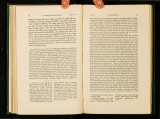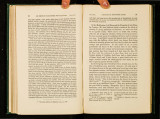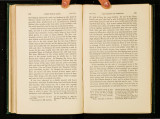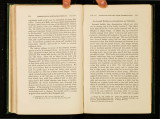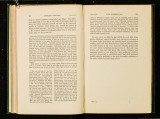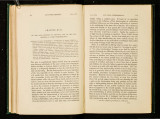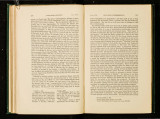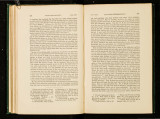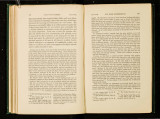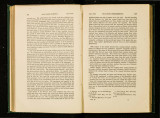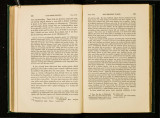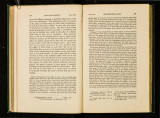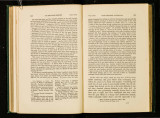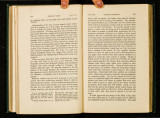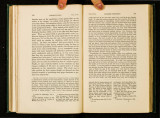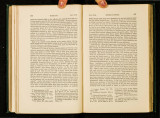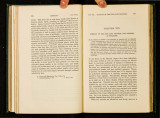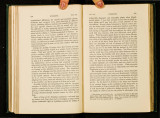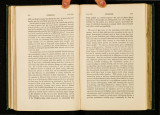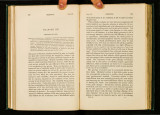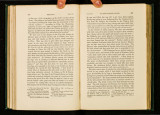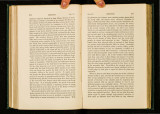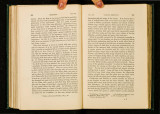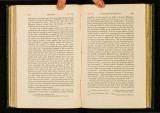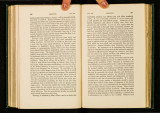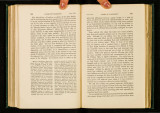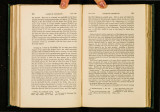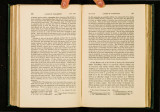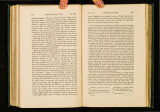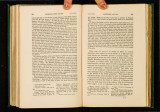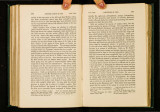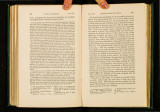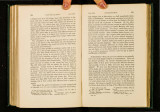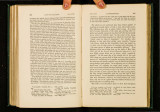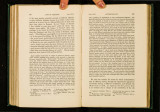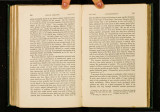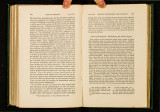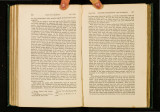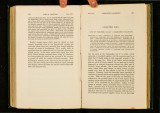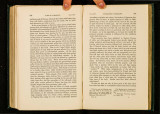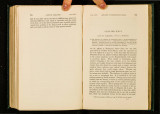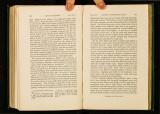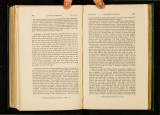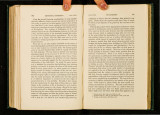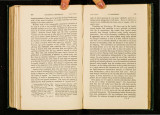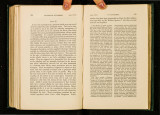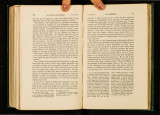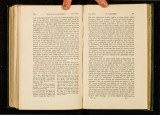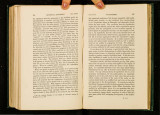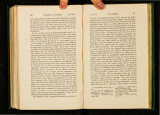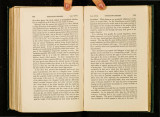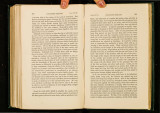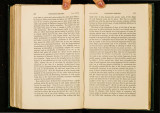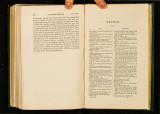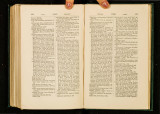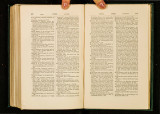| OCR Text |
Show 140 GOOD FROM CROSSING. CnAP. XVII. taken from distinct plants of tho same variety, which bad, of course, been propagated by bulbs, but that they all seed~d !rooly with pollen from any other variety. To give two examples: Ophir did no~ produce a caps~lo with its own pollen, but when fertilised with that of Jamre, Brenchleyens1~, Vulcain, and Linne, it produced ten fine capsules; but tho pollen of Oplur was good, for when Linne was fertilised by it seven capsules w~re produced. This latter variety, on the other hand, was utte~·ly barren WI~h its own pollen, which wo have soon was perfe?~ly effiment ~n Ophir. Altogether, Mr. Rawson, in the year 1861, forttlised t~e~ty-stx flowers borne by four varieties with pollen taken fTom other vanetws, and every single flower produced a fino seed-capsule; whereas fifty-two flowers on the same plants, fertilised at the same time with their own pollen, did not yield a single seed-capsule. Mr. Rawson fertilised, in some cases, the alternate flowers, and in other cases all those down one side of the spike, with pollen of other varieties, and tho remaining flowers with their own pollen; I saw these plants when the capsules were nearly matmo, and their curious arrangement at once brought full conviction to the mind that an immense advantage had been derived from crossing these hybrids. Lastly, I have heard from Dr. E. Bornet, of Antibes, who has made numerous experiments in crossing the species of Cistus, but has not yet published the results, that, when any of these hybrids are fertile, they may be said to be, in regard to function, dioocious ; "for the flowers "are always sterile when tho pistil is fertilised by pollen taken from tho " same flower or from flowers on the same plant. But they are often fertile "if pollen be employed fi·om a distinct individual of the same hybrid "nature, or fi·om a hybrid made by a reciprocal .cross." Conclusion.-The facts just given, which show that certain plants are self-sterile, although both sexual elements are in a fit state for reproduction when united with distinct individuals of the same or other species, appear at first sight opposed to all analogy. The sexual elements of the same flower have become, as already remarked, differentiated in relation to each other, almost like those of two distinct species. With respect to the species which, whilst living under their natural conditions, have their reproductive organs in this peculiar state, we may conclude that it has been naturally acquired for the sake of effectually preventing self-fertilisation. The case. is closely analogous with dimorphic and trimorphic plants, which can be fully fertilised only by plants belonging to the opposite form, and not, as in the foregoing cases, indifferently by any other plant. Some of these dimorphic plants are completely sterile with pollen taken from the ::;arne plant or from the same CHAP. XVII. CONCLUSION. 141 form. It is interesting to observe the graduated series from plants which, when fertilised by their own poll~n, yield the f~ll number of seed, but with the seedlings a httle dwarfed m stature-to plants which when self-fertilised yield ~ew se~ds-to those which yield none--and, lastly, to those m .which. the plant's own pollen and stigma act on each other hke pms?n. This peculiar state of the reproductive organs, when occurrm~ in certain individuals alone, is evidently abnormal; and as It chiefly affects exotic plants, or indigenous ~lants culti;~ted in pots we may attribute it to some change m the conditwns of life,' acting on the plants themselves or on their. parents. :r.he self-impotent Passiflora alata, which recovered Its self-fertility after having been grafted on a distinct stock, shows how sm.all a change is sufficient to act powerfully on the reproductive system. The possibility of a plant becoming under culture selfimpotent is interesting as throwing ~ight on the. occurrence ?f this same condition in natural speCies. A cultivated plant m this state generally remains so during its whole life; ~nd from this fact we may infer that the state is probably congerutal. Kolreuter, however, has described some plants of V erbascum which varied in this respect even during the same season. As in all the normal cases, and in many, probably in most, of the abnormal cases, any two self-impotent plants can reciprocally fertilize each other, we may infer that a very slight difference in the nature of their sexual elements suffices to give fertility; but in other instances, as with some Passifloras and the hybrid Gladioli, a greater degree of differen_t~atio~ app.ears to be necessary, for with these plants fertility IS gamed only by the union of distinct species, or of hybrids of dist~nct parentage. These facts all point to the same general. co~c~usiOn, namely, that good is derived from a cross ~e~we.en mdivi~~als, which either innately, or from exposure to diSSimilar conditiOns, have come to differ in sexual constitution. Exotic animals confined in menageries are sometimes in nearly the same state as the above-des~ribed self-impote~t plants ; for, as we shall see in the followmg chapter, ce1iam monkeys, the larger carnivora, several finches, geese, and pheasants, cross together, quite as freely as, or even more freely than, the individuals of the same species breed together. Cases will, |




